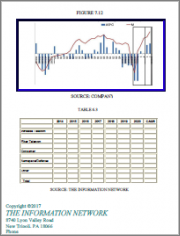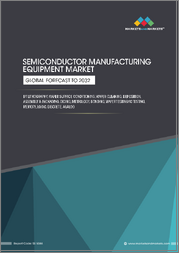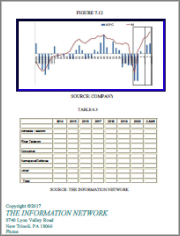
|
시장보고서
상품코드
1479759
중국 본토의 반도체 및 장비 시장 : 분석 및 제조 동향Mainland Chinas Semiconductor and Equipment Markets: Analysis and Manufacturing Trends |
||||||
중국 본토의 반도체 산업은 최근 몇 년 동안 괄목할 만한 성장과 변혁을 이루며 세계 무대에서 중요한 위치를 차지하고 있습니다. 세계 최대 반도체 소비국이자 중요한 전자기기 생산국인 중국의 반도체 시장은 투자자, 업계 이해관계자 및 정책 입안자들이 주목하는 대상입니다. 중국 본토의 반도체 및 장비 시장의 역동성, 동향 및 제조 능력을 이해하는 것은 빠르게 진화하는 이 복잡한 상황을 헤쳐나가는 데 필수적입니다.
중국 본토 반도체 산업에서 가장 주목해야 할 동향 중 하나는 국내 반도체 기업의 부상으로, SMIC(Semiconductor Manufacturing International Corporation), Huawei의 HiSilicon, YMTC(Yangtze Memory Technologies Corporation) 등의 기업들이 세계 반도체 시장의 주요 진입자로 부상하며 기존 기업들에게 도전장을 내밀고 경쟁을 촉진하고 있습니다.
또 다른 중요한 추세는 첨단 제조 기술과 제조 능력에 대한 관심이 높아지고 있다는 점입니다. 중국 본토는 첨단 제조 공정, 패키징 기술 및 장비 제조 개발에 많은 투자를 하고 있습니다. 국가집적회로산업투자기금(일명 빅펀드)과 메이드 인 차이나 2025 전략과 같은 이니셔티브는 FinFET 트랜지스터, 3D 패키징, 첨단 리소그래피와 같은 첨단 반도체 제조 기술의 채택을 가속화하는 데 도움이 되고 있습니다.
이 보고서는 중국 본토의 반도체 및 장비 시장을 심층적으로 분석하여 주요 제조 동향, 기술 발전, 시장 역학 및 경쟁 상황에 대한 자세한 분석과 인사이트를 제공합니다. 제조 공정, 패키징 기술, 장비 혁신 등 반도체 제조의 최신 동향을 조사하여 중국 본토 반도체 산업의 성장을 촉진하고 미래를 형성하는 요인을 조명합니다. 또한, 중국 본토의 반도체 산업을 이끄는 전략적 이니셔티브, 투자 및 정책을 조사하여 시장 기회, 도전 과제 및 경쟁 전략에 대한 귀중한 관점을 제공합니다.
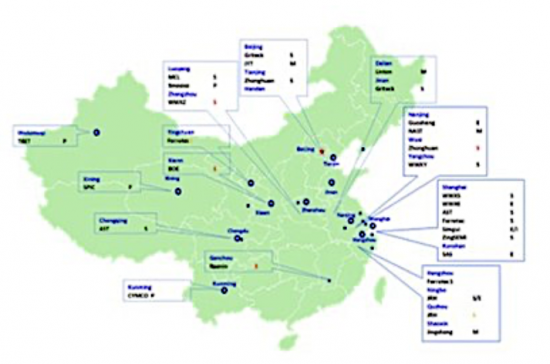
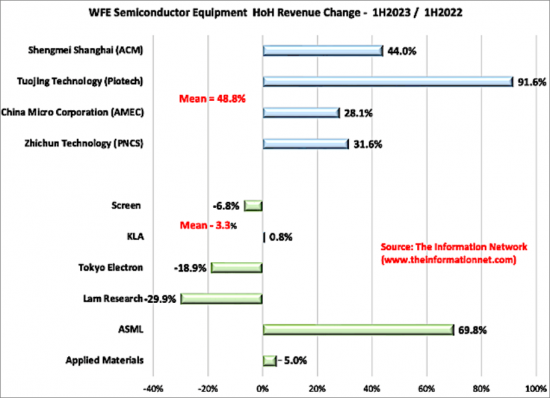
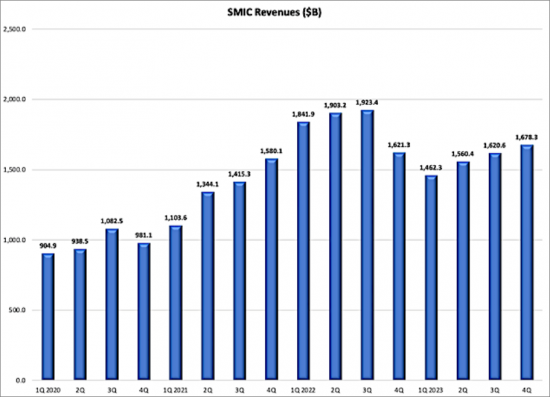
목차
제1장 소개
- 소개
제2장 반도체 산업
- 소개
- 중국의 반도체 시장
- 중국의 반도체 인프라
- 정부 목표
- 중국의 반도체 제조업체
- Wuxi China Resources Huajing Microelectronics
- CSMC Technologies
- Shanghai Huahong Grace Semiconductor(HHGRACE)
- Hangzhou Youwang Electronics
- Huayue Microelectronics
- Semiconductor Manufacturing Int'l(SMIC)
- Advanced Semiconductor Manufacturing(ASMC)
- Fairchild Semiconductor Suzhou
- Shanghai Belling
- SK Hynix
- Toshiba Semiconductor(Wuxi)
- HeJian Technology
- TSMC
- Ningbo BYD Semiconductor
- SIM-BCD
- Intel
- Samsung
- Datung NXP Semiconductors
- UMC
- XMC
- Shanghai Huali Microelectronics Corporation
- YMTC
- CXMT
- Hua Hong
- Thatic
- Zhaoxin
- Semiconductor Manufacturing Electronics
- 백엔드 제조
- 인쇄회로기판(PCB) 제조
- IC 설계
- 전자부품
- 외국 기업의 역할
- IC 업계 평가
부록 A : 중국의 설계 기업
부록 B : 중국의 IC 제조업체
부록 C : 중국의 패키징 및 시험 기업
제3장 시장 분석
- 아시아의 경제 회복
- 반도체 시장
- IC 업계 현황
- 중국의 IC 제조능력
- 세계의 메모리 시장
- 중국의 메모리 시장
- 중국의 주요 파운드리
- 중국의 반도체 장비 시장
- 시장 전체
- 중국의 장비 시장, 부문별
- 중국의 장비 공급업체 개요
제4장 하이테크 분야
- 소개
- 통신
- 옵토일렉트로닉스
- 소프트웨어
- 가전
- 화학제품·재료
- 환경 산업
- 디스플레이
제5장 하이테크 산업 개발구
- 소개
- 토치 프로그램
- 하이테크 산업 개발구
- 안후이
- 베이징
- 푸젠성
- 간쑤성
- 광동성
- 광시좡족 자치구
- 구이저우성
- 하이난성
- 허베이성
- 헤이룽장성
- 허난성
- 후베이성
- 후난성
- 내몽고
- 장쑤성
- 장시성
- 지린성
- 랴오닝성
- 산시성
- 산둥성
- 상하이
- 산시성
- 쓰촨성
- 톈진
- 신장위구르 자치구
- 윈난성
- 저장성
- 자유 무역 지역
제6장 경제 통계와 분석
- 경제 상황
- 국내 총생산
- 고용 부문
- 인플레이션
- 소매 매출
- 외국무역
- 소비자 지출
- 투자
- 경제 통계
Introduction
The semiconductor industry in Mainland China has undergone remarkable growth and transformation in recent years, positioning itself as a key player on the global stage. As the world's largest consumer of semiconductors and a significant producer of electronic devices, China's semiconductor market is a focal point for investors, industry stakeholders, and policymakers alike. Understanding the dynamics, trends, and manufacturing capabilities within Mainland China's semiconductor and equipment markets is essential for navigating the complexities of this rapidly evolving landscape.
This comprehensive report offers a deep dive into Mainland China's semiconductor and equipment markets, providing in-depth analysis and insights into key manufacturing trends, technological advancements, market dynamics, and competitive landscapes. By examining the latest developments in semiconductor manufacturing, including fabrication processes, packaging technologies, and equipment innovations, the report sheds light on the factors driving growth and shaping the future of the industry in Mainland China.

Furthermore, the report explores the strategic initiatives, investments, and policies driving Mainland China's semiconductor industry, offering valuable perspectives on market opportunities, challenges, and competitive strategies. From the rise of domestic semiconductor companies to the impact of global trade dynamics and technological disruptions, this report provides a holistic view of Mainland China's semiconductor ecosystem and its implications for global stakeholders.
Whether you're a semiconductor manufacturer, equipment supplier, investor, or policymaker, this report serves as an indispensable resource for understanding the dynamics of Mainland China's semiconductor and equipment markets, identifying growth opportunities, and making informed strategic decisions in an increasingly interconnected and dynamic industry landscape.
Trends
One of the most notable trends in Mainland China's semiconductor industry is the rise of domestic semiconductor companies. Fueled by government support, strategic investments, and technological innovation, Chinese semiconductor firms have been making significant strides in various segments of the industry, from design and manufacturing to packaging and testing. Companies such as SMIC (Semiconductor Manufacturing International Corporation), Huawei's HiSilicon, and Yangtze Memory Technologies Corporation (YMTC) have emerged as major players in the global semiconductor market, challenging established incumbents and driving competition.
Another key trend is the increasing focus on advanced manufacturing technologies and capabilities. Mainland China has been investing heavily in the development of cutting-edge fabrication processes, packaging technologies, and equipment manufacturing. Initiatives such as the National Integrated Circuit Industry Investment Fund (also known as the Big Fund) and the Made in China 2025 strategy have been instrumental in accelerating the adoption of advanced semiconductor manufacturing techniques, including FinFET transistors, 3D packaging, and advanced lithography.
Additionally, Mainland China's semiconductor industry has been actively pursuing collaborations and partnerships with international players to bolster its technological capabilities and expand its market reach. Joint ventures, technology licensing agreements, and strategic alliances with leading semiconductor companies from countries such as the United States, South Korea, and Taiwan have become increasingly common, facilitating knowledge transfer, technology exchange, and access to global markets.
Impact of U.S. Sanctions
In recent years, Mainland China's semiconductor and equipment markets have faced significant challenges due to escalating trade tensions and U.S. sanctions. These developments have reshaped the landscape of the semiconductor industry in China, prompting the country to accelerate efforts to achieve self-sufficiency and reduce its reliance on foreign technologies. Against this backdrop, analyzing the trends in Mainland China's semiconductor and equipment markets becomes crucial for understanding the impact of these sanctions and identifying opportunities and challenges for industry stakeholders.
One prominent trend in Mainland China's semiconductor market is the rapid growth of domestic semiconductor companies. Faced with restrictions on access to key technologies and components from foreign suppliers, Chinese semiconductor firms have ramped up efforts to develop indigenous capabilities in chip design, fabrication, and packaging. This has led to the emergence of a robust ecosystem of domestic semiconductor companies, supported by government policies and investments. These companies are increasingly focused on developing advanced semiconductor products tailored to the needs of domestic and global markets.

Furthermore, Mainland China's semiconductor industry is witnessing increased investment in research and development (R&D) to drive innovation and technological advancements. With the goal of achieving technological parity with global leaders, Chinese semiconductor companies are investing heavily in areas such as artificial intelligence (AI), 5G, Internet of Things (IoT), and high-performance computing. These investments are aimed at developing cuttingedge semiconductor technologies and products that can compete on a global scale and reduce the country's dependence on foreign suppliers.
Moreover, the sanctions imposed by the United States have prompted Mainland China to accelerate efforts to enhance its semiconductor manufacturing capabilities. This includes investments in advanced manufacturing facilities and equipment, as well as the development of domestic supply chains for critical semiconductor materials and components. Additionally, Mainland China is exploring collaborations with other countries and regions to access advanced semiconductor technologies and expertise.
In the semiconductor equipment market, Mainland China is investing in the development and deployment of advanced manufacturing equipment to support its growing semiconductor industry. This includes investments in lithography machines, etching systems, deposition tools, and inspection equipment to enable the production of advanced semiconductor products. Domestic equipment manufacturers are also emerging as key players, supported by government subsidies and incentives to enhance their competitiveness in the global market.
Overall, Mainland China's semiconductor and equipment markets are undergoing rapid transformation in response to U.S. sanctions and the drive for self-sufficiency. While these developments present challenges, they also create opportunities for domestic companies to innovate, grow, and compete on a global scale.
What's Included in This Report:
The Mainland China's Semiconductor and Equipment Markets: Analysis and Manufacturing report delves into the intricate dynamics of one of the most rapidly evolving sectors in the global economy. It meticulously analyzes various facets of the semiconductor industry within mainland China, providing readers with invaluable insights to navigate this dynamic landscape, including:
Market Overview: This section offers a panoramic view of the semiconductor market in mainland China, encompassing its size, growth trajectory, and the primary factors propelling or inhibiting its expansion. It delves into historical data and current trends to provide a comprehensive understanding of the market dynamics.
Competitive Landscape: An in-depth analysis of the key players operating in mainland China's semiconductor industry is crucial for understanding market dynamics and competitive strategies. This segment evaluates the market share, growth strategies, R&D initiatives, and recent developments of major semiconductor companies in the region.

Manufacturing Trends: Manufacturing trends are pivotal indicators of the industry's health and trajectory. This section examines capacity expansions, investment patterns, technological advancements in fabrication facilities, and shifts in manufacturing strategies adopted by semiconductor manufacturers in mainland China.
Market Segmentation: The semiconductor market in mainland China is multifaceted, catering to diverse product types, applications, and end-user industries. This segment dissects the market into various segments, providing insights into their growth trajectories, market size, and key drivers.
Table of Contents
Chapter 1. Introduction
- 1.1. Introduction
Chapter 2. Semiconductor Industry
- 2.1. Introduction
- 2.2. China's Domestic Semiconductor Market
- 2.3. China's Semiconductor Infrastructure
- 2.4. Government Goals
- 2.5. Semiconductor Manufacturers In China
- 2.5.1. Wuxi China Resources Huajing Microelectronics
- 2.5.2. CSMC Technologies
- 2.5.3. Shanghai Huahong Grace Semiconductor (HHGRACE)
- 2.5.4. Hangzhou Youwang Electronics
- 2.5.5. Huayue Microelectronics
- 2.5.6. Semiconductor Manufacturing Int'l (SMIC)
- 2.5.7. Advanced Semiconductor Manufacturing (ASMC)
- 2.5.8. Fairchild Semiconductor Suzhou
- 2.5.9. Shanghai Belling
- 2.5.10. SK Hynix
- 2.5.11. Toshiba Semiconductor (Wuxi)
- 2.5.12. HeJian Technology
- 2.5.13. TSMC
- 2.5.14. Ningbo BYD Semiconductor
- 2.5.15. SIM-BCD
- 2.5.16. Intel
- 2.5.17. Samsung
- 2.5.18. Datung NXP Semiconductors
- 2.5.19. UMC
- 2.5.20. XMC
- 2.5.21. Shanghai Huali Microelectronics Corporation
- 2.5.22. YMTC
- 2.5.23. CXMT
- 2.5.24. Hua Hong
- 2.5.25. Thatic
- 2.5.26. Zhaoxin
- 2.5.27. Semiconductor Manufacturing Electronics (Shaoxing)
- 2.6. Back-End Manufacturing
- 2.7. Printed Circuit Board (PCB) Manufacturing
- 2.8. IC Design
- 2.9. Electronics Components
- 2.10. Role Of Foreign Companies
- 2.11. IC Industry Assessment
Appx A: China Design Companies
Appx B: China IC Manufacturers
Appx C: China Packaging and Testing Companies
Chapter 3. Market Analysis
- 3.1. Economic Recovery In Asia
- 3.2. Semiconductor Market
- 3.2.1. IC Industry Status
- 3.2.2. China IC Fab Capacity
- 3.2.3. Global Memory Market
- 3.2.4. Chinese Memory Market
- 3.2.5. China's Leading Foundry
- 3.2.5.1. SMIC
- 3.2.5.2. Hua Hong
- 3.3. China Semiconductor Equipment Market
- 3.3.1. Overall Market
- 3.3.2. China Equipment Market by Segment
- 3.3.2. Chinese Equipment Supplier Profiles
- 3.3.3.1. AMEC
- 3.3.3.2. ACM Research
- 3.3.3.3. AccoTest
- 3.3.3.4. Naura
- 3.3.3.5. Anji Microelectronics
- 3.3.3.6. PNC
- 3.3.3.7. Kingsemi
- 3.3.3.8. Changchuan
- 3.3.3.9. SMEE
- 3.3.3.10. Hwatsing
- 3.3.3.11. Piotech
- 3.3.3.14. Raintree Scientific Instruments
Chapter 4. High-Tech Sectors
- 4.1. Introduction
- 4.2. Telecommunications
- 4.3. Optoelectronics
- 4.4. Software
- 4.5. Consumer Electronics
- 4.6. Chemicals/Materials
- 4.7. Environmental Industry
- 4.8. Display
- 4.8.1. TFT-LCD Technology
- 4.8.2. OLED Technology
Chapter 5. High Technology Industry Development Zones
- 5.1. Introduction
- 5.2. Torch Program
- 5.3. High Technology Industry Development Zones
- 5.3.1. Anhui Province
- Hefei High And New Technology Industry Development Zone
- 5.3.2. Beijing
- Beijing Experimental Zone For The Development Of New Technology Industries
- Changping Park Of Bez
- Fengtai Park Of Bez
- 5.3.3. Fujian Province
- Fuzhou Science And Technology Park
- Xiamen Torch High Technology Industry Development Zone
- 5.3.4. Gansu Province
- Lanzhou High And New Technology Industry Development Zone
- 5.3.5. Guangdong Province
- Foshan High And New Technology Industry Development Zone
- Guangzhou Tianhe High And New Technology IndustryDevelopment Zone
- Huizhou Zhongkai New Technology Industry Development Zone
- Shenzhen Science And Technology Industrial Park
- Zhongshan High & New Technology Innovation Service Center
- Zhuhai High And New Technology Industry Development Zone
- 5.3.6. Guangxi Zhuang Autonomous Region
- Guilin High And New Technology Industry Development Zone
- Nanning New Technology Industry Development Zone
- 5.3.7. Guizhou Province
- Guiyang Xintian New Technology Industry Development Zone
- 5.3.8. Hainan Province
- Hainan International Industrial Park
- 5.3.9. Hebei Province
- Baoding New Technology Industry Development Zone
- Shijiazhuang High And New Technology Industry Development Zone
- 5.3.10. Heilongjiang Province
- Daqing High And New Technology Industry Development Zone
- Harbin High And New Technology Industry Development Zone
- 5.3.11. Henan Province
- Luoyang High And New Technology Industry Development Zone
- Zhengzhou High And New Technology Industry Development Zone
- 5.3.12. Hubei Province
- Wuhan Donghu New Technology Development Zone
- Xiangfan High And New Technology Industry Development Zone
- 5.3.13. Hunan Province
- Changsha High And New Technology Industry Development Zone
- Zhuzhou High And New Technology Industry Development Zone
- 5.3.14. Inner Mongolia Autonomous Region
- Baotou Rare Earth High And New Technology Industry Development Zone
- 5.3.15. Jiangsu Province
- Changzhou High And New Technology Industry Development Zone
- Nanjing High And New Technology Industry Development Zone
- Suzhou High And New Technology Industry Development Zone
- Wuxi High And New Technology Industry Development Zone
- 5.3.16. Jiangxi Province
- Nanchang High And New Technology Industry Development Zone
- 5.3.17. Jilin Province
- Changchun High And New Technology Industry Development Zone
- Jilin High And New Technology Industry Development Zone
- 5.3.18. Liaoning Province
- Anshan High And New Technology Industry Development Zone
- Dalian High And New Technology Industrial Park
- Shenyang New-High-Tech Industrial Development Zone
- 5.3.19. Shaanxi Province
- Baoji High And New Technology Industry Development Zone
- Xi'an New Technology Industry Development Zone
- 5.3.20. Shandong Province
- Ji'nan High And New Technology Industry Development Zone
- Qingdao High-Tech Industrial Park
- Weifang High And New Technology Industry Development Zone
- Zibo High And New Technology Industry Development Zone
- 5.3.21. Shanghai
- Incubator Center Of High-Technology Of China Textile International
- Shanghai High And New Technology Industry Development Zone
- Shanghai Zhangjiang Hi-Tech Park
- 5.3.22. Shanxi Province
- Taoyuan High And New Technology Industry Development Zone
- 5.3.23. Sichuan Province
- Chengdu High And New Technology Industry Development Zone
- Chongqing High And New Technology Industry Development Zone
- Mianyang High And New Technology Industry Development Zone
- 5.3.24. Tianjin
- Tianjin New Technology Industrial Park
- 5.3.25. Xinjiang Uygur Autonomous Region
- Urumqi High And New Technology Industry Development Zone
- 5.3.26. Yunnan Province
- Kunming High And New Technology Industry Development Zone
- 5.3.27. Zhejiang Province
- Hangzhou High And New Technology Industry Development Zone
- 5.3.1. Anhui Province
- 5.4. Free Trade Zones
Chapter 6. Economic Statistics And Analysis
- 6.1. Economic Climate
- 6.2. GDP
- 6.3. Employment Sector
- 6.4. Inflation
- 6.5. Retail Sales
- 6.6. Foreign Trade
- 6.7. Consumer Spending
- 6.8. Investments
- 6.9. Economic Statistics







